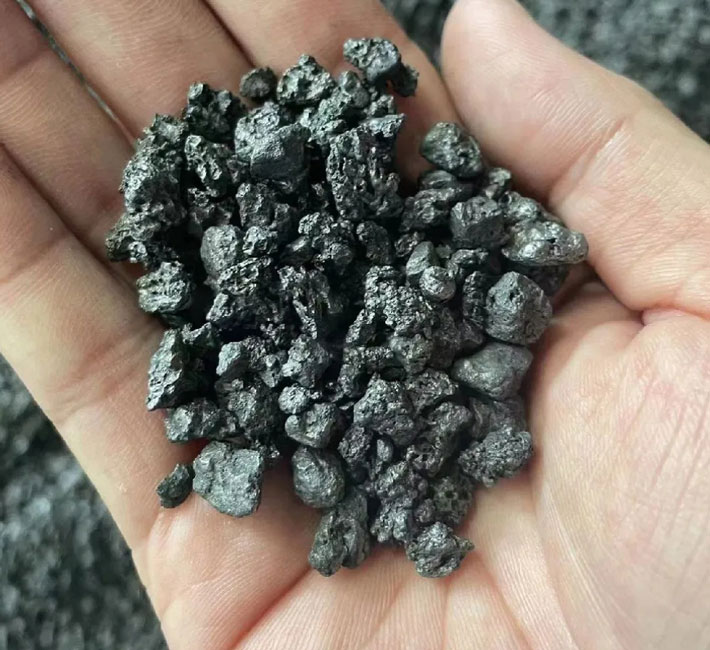
Graphite Petroleum Coke(GPC) is a major carbon additive used in the production of steel. Its ability of adjusting the carbon content allows precise control over steel composition. This results in enhanced metallurgical characteristics and improved product performances. GPC also helps reduce impurities like sulfur and nitrogen in the smelting stage. This leads to more efficient energy consumption and higher quality steel products.
Graphitized petroleum coke is produced by subjecting petroleum coke to high temperatures and pressures, turning its amorphous carbon structure into a highly ordered, crystalline graphite structure. The result is a carbon active with several key properties including high reactivity and low sulfur and nitrogen contents. It also has a lower ash level than its parent material.
Depending on the production method, different types of petcoke exist, with the morphology varying from flakey to needle-like. The lowest-value fuel coke is a sponge-like agglomerate of spherical shots, while anode coke has an acicular structure that's similar to graphitizable calcined petroleum coke. The highest quality anode can be described as a highly crystalline version of calcined Petroleum Coke with a high graphitic convert yield.
GPC can also be used as a vital raw material in the aluminium melting process. As a molten aluminium alloy additive, carbon helps increase the purity, which results in a more efficient casting process. Its thermal conductivity also promotes energy savings in the smelting furnace by increasing heat transfer and optimizing operational efficiency.
The insulating and lubricating properties of GPC make it an important ingredient in friction materials such as brake pads and clutch linings. This reduces squeaking or scrubbing sounds during clutch engagement and braking processes. It also prolongs the life of the friction materials by reducing wear.
GPC is also a key raw material in the production of lithium-ion cells. Incorporating it into battery electrodes helps improve electrical conductivity and enhances the longevity of the overall battery life. This is because its consistent particle sizes contribute to a more equal electrochemical reaction inside the battery.
GPC as a primary raw material can be used in a variety of industries to reduce the need for natural resources such as coal and iron ore. This will also lower production costs. This is a crucial step in achieving sustainable development and circular economy. GPC’s recyclability is a great advantage for the environment. The recyclability of GPC can be attributed to its relatively low ash and sulfur contents, as well as its high electrical conductivity. It can be used as a replacement for nonmetal materials in a variety applications, such as ceramics and glasses. It can also be used to replace coal in coke-ovens, which reduces energy consumption and carbon dioxide emissions during smelting. GPC is therefore a more attractive choice for industrial producers, as well consumers.

Write a Message